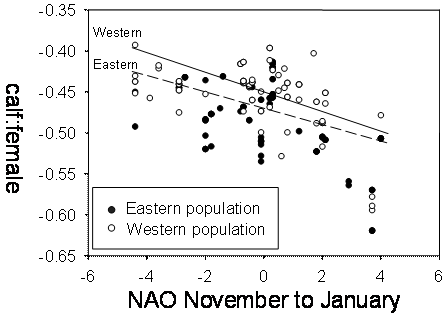How have deer populations responded to the environmental change experienced in different parts of Scotland?
- Count data over the last 3 decades have shown that as deer density has increased and at the same time the recruitment rate (calf:hind ratios) has declined (Fig. 1).
- This has been linked to the increased frequency of positive winter North Atlantic Oscillations (higher winter precipitation, Fig 2).
- However, there are regional differences in recruitment rates, even after accounting for density and climate (lower calf:hind ratios in eastern Scotland compared to those in the west).
- We are now exploring the consequences of regional differences in the climate change predictions (increased rainfall in the west and drier summers in the east) and land use changes (e.g. reduction in sheep numbers) on deer population demography1.

1. Irvine, R.J., Broadmeadow, M., Gill, R.M.A., & Albon, S.D. (2007). Deer and global warming: How will climate change influence deer populations? Deer (3), 37-39
Contact: Dr. Javier Perez Barberia |